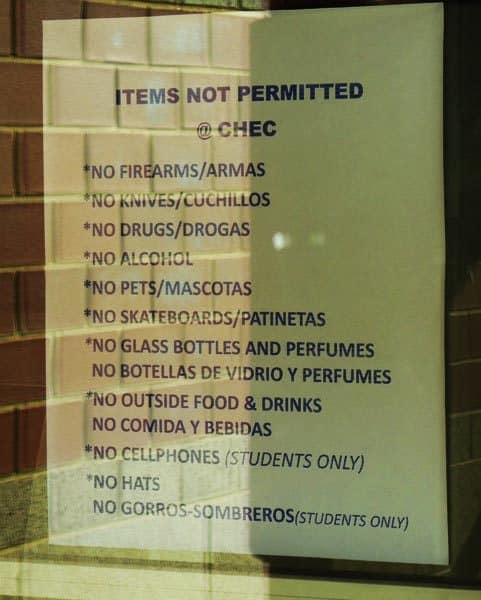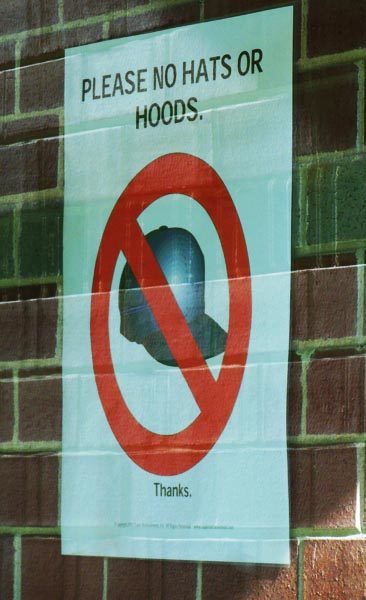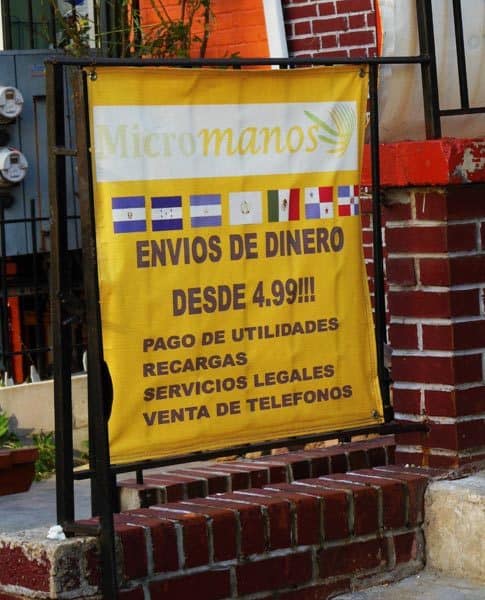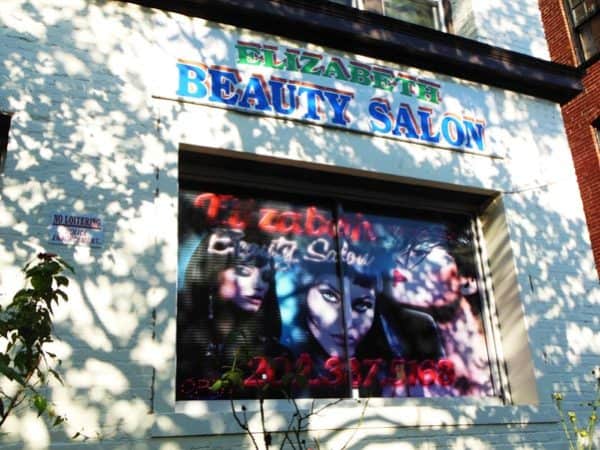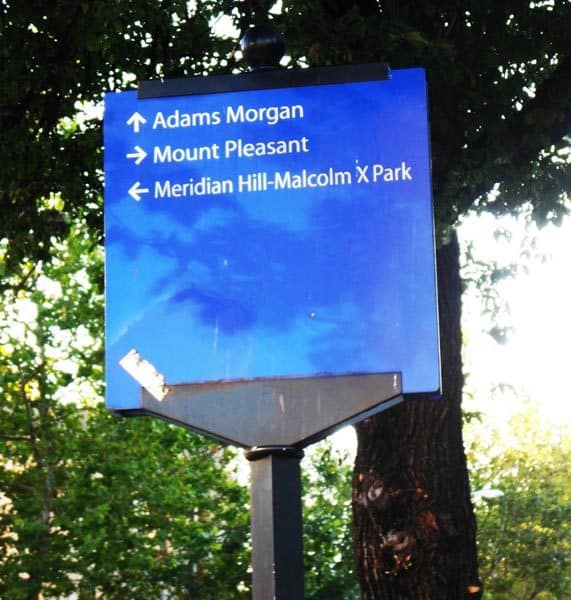Photos: Guided Tour of America’s Future
Chris Roberts, American Renaissance, November 17, 2017

IQ studies, statistics on crime, and reports on the cultural practices of non-whites are important, but I believe photo essays have a greater impact. That is why I have taken pictures in various Washington DC-area neighborhoods. The first was Anacostia, a black ghetto, the second was Silver Spring, a “third world melting pot.”
This final collection, on the Washington DC neighborhoods of Columbia Heights and Mount Pleasant, is the most representative. Its population is what American cities are most likely to look like in the coming decades, and what not a few, in such places as Chicago and Dallas, already look like. Racial breakdowns for neighborhoods rather than cities or counties are imprecise, but Columbia Heights is roughly 40.3 percent black, 27.8 percent white, 25.1 percent Hispanic, 4.8 percent Asian, and 2 percent mixed or “other.” Mount Pleasant is roughly 50 percent white, 25 percent Hispanic, 19 percent black, and 5.6 percent Asian.
The “neighborhood cluster” that includes both Mount Pleasant and Columbia Heights along with two other similar neighborhoods is 38 percent black, 31 percent white, 27 percent Hispanic, and 4.4 percent Asian — with 25 percent of the population foreign-born. The specific mix can vary quite a bit from neighborhood to neighborhood, but you can consider this a guided tour of the future.
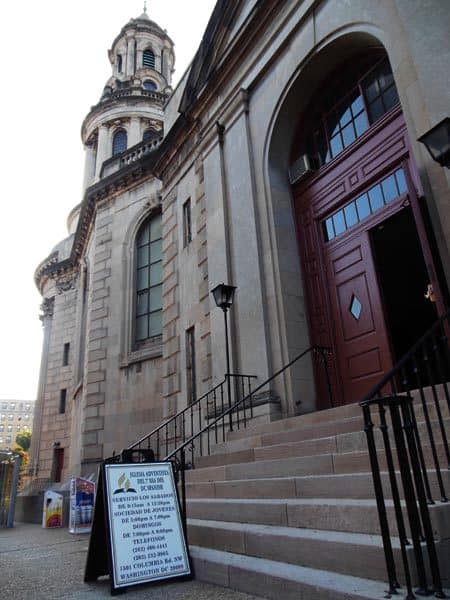
One of the first things that struck me was the presence of the very American phenomena of Hispanic Protestantism. This is a church for 7th Day Adventists, that from what I can tell, operates exclusively in Spanish; in the background you can see newsstands for free Spanish-language papers. Although I do not generally sympathize with Latin American immigrants, I am saddened that so many are losing Catholicism, which has been a central element of Latin America’s identity since its beginning.
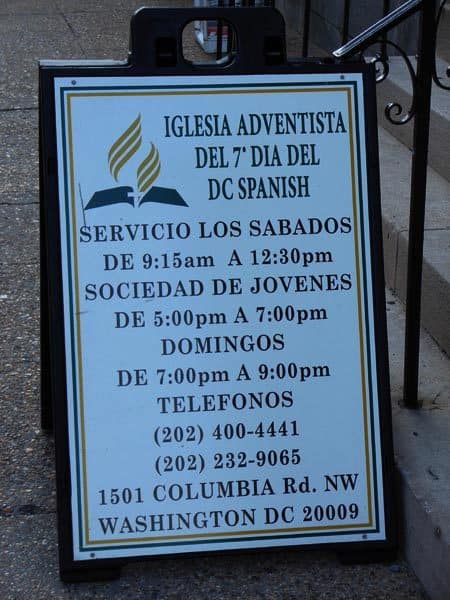
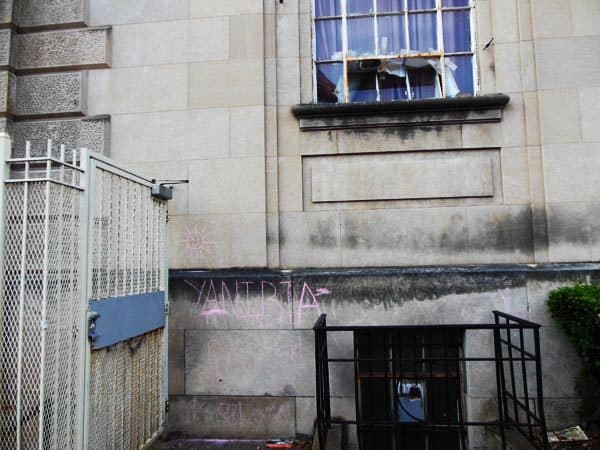
Even churches in this neighborhood aren’t respected; this is the side of the 7th Day Adventist Church.
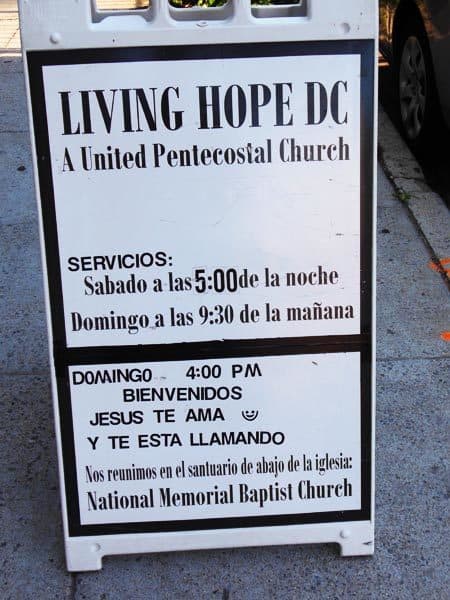
Here is Spanish-language Pentecostal Church that lets a Spanish-language Baptist Church meet in its basement.
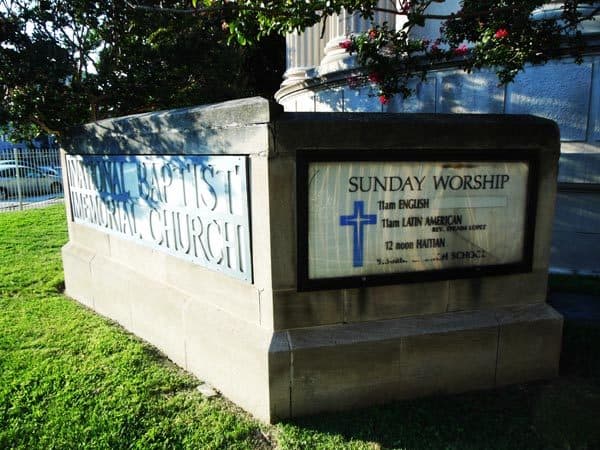
Here is the most multicultural church I have ever seen — three languages every Sunday: English, Spanish, and Haitian Creole. Churches, remember, are the most segregated part of American life. I wonder whether the English service is black or white.
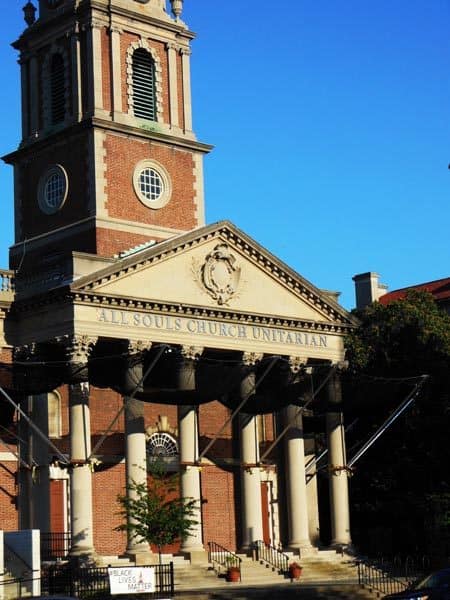
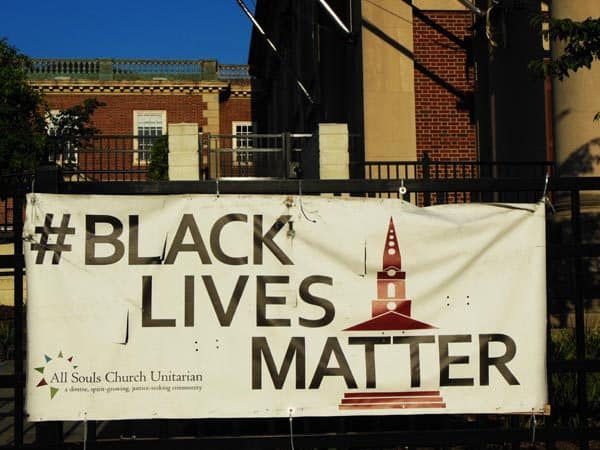
The white church in the area is boastfully progressive.
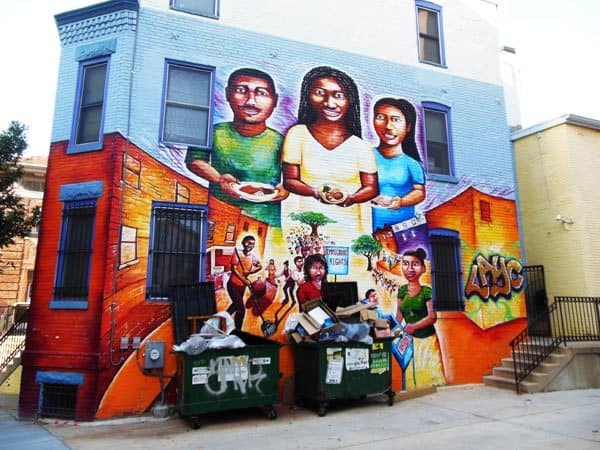
Like all Hispanic ghettoes, Columbia Heights is filled with murals including the most clichéd slogans of our time. This is on the back of a “youth center” of some kind — note the bars over the windows on the ground level. As I was taking photographs, a very suspicious Hispanic woman burst out of the building and asked what I was doing. I said, “It’s for school.” She smiled, said “Okay,” and went back inside.
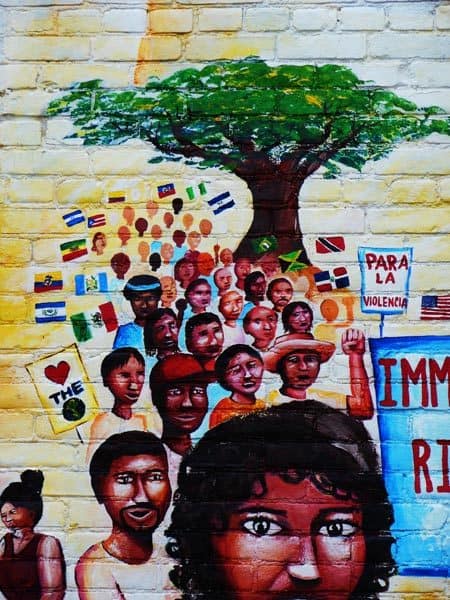
“Stop the violence.”
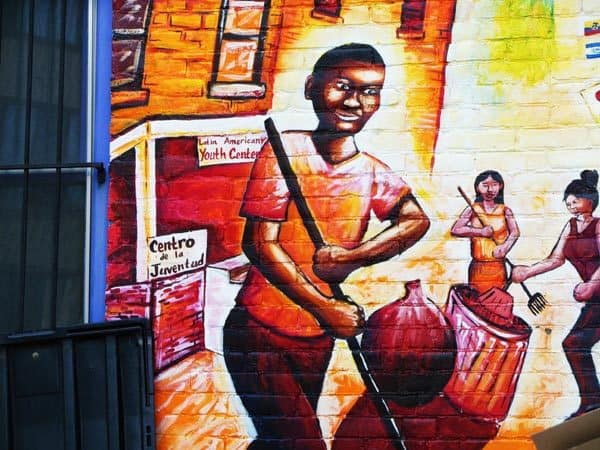
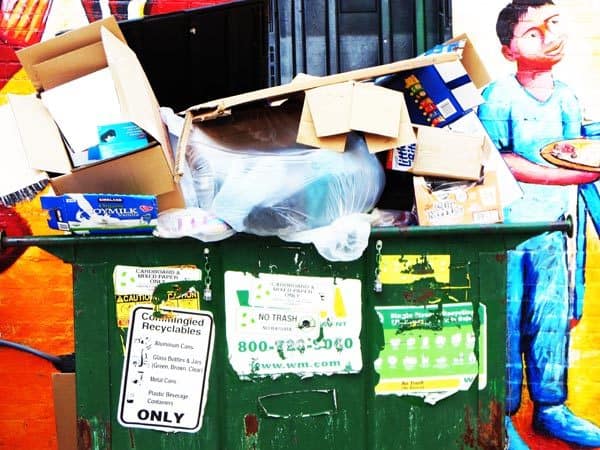
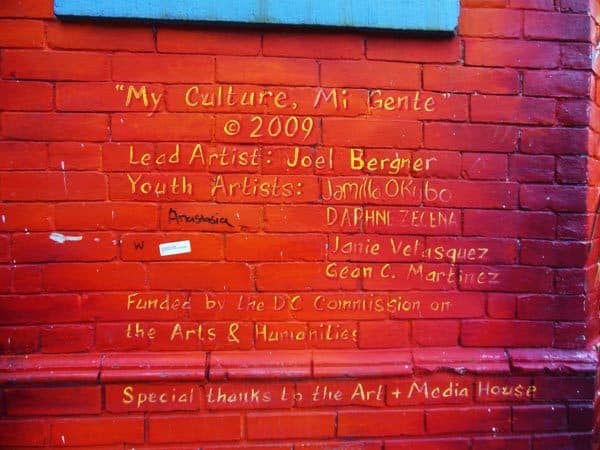
“Funded by the DC Commission on the Arts & Humanities.”
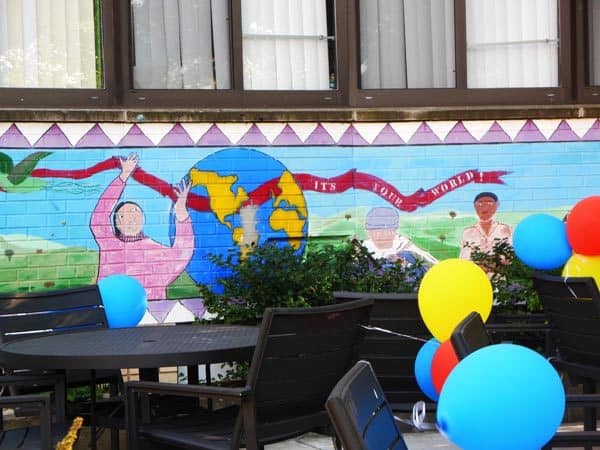

“Lincoln Multicultural Middle School” is an amusingly appropriate name for a public school in a multiracial ghetto. From what I could find online, the demographics of the school are: 56 percent Hispanic, 41.5 percent black, 2 percent Asian, and 0.4 percent white. Nearly 80 percent of students are from low-income families. I took a look through the windows:
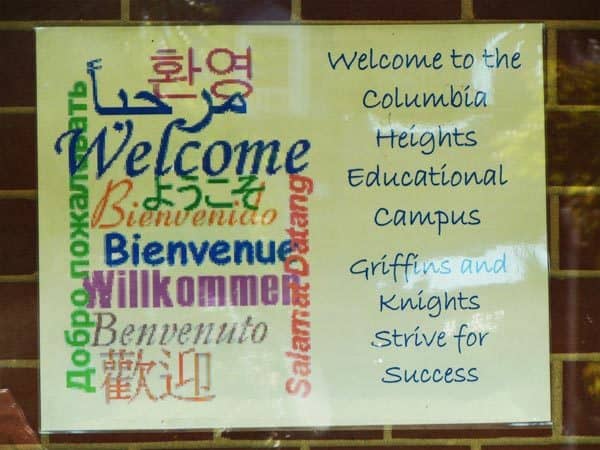
I see 11 languages on this sign, but I bet not a single student can identify all of them.
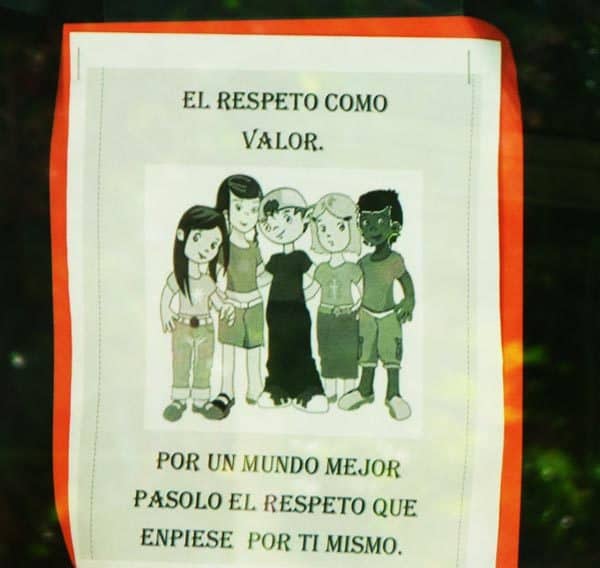
This sign explains that respect is a worthy value, and that you should pass it on.
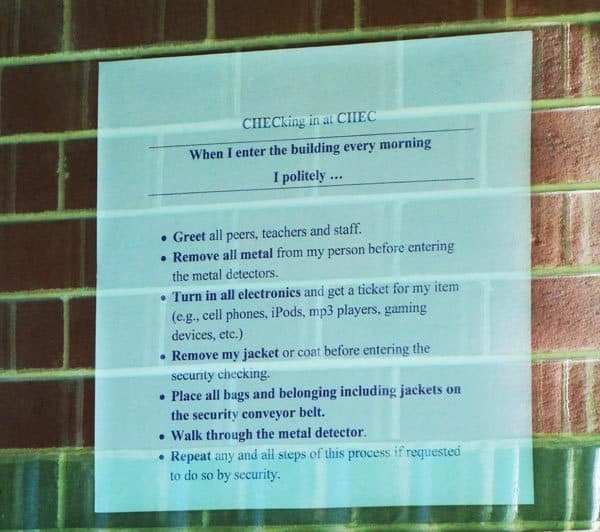
After being welcomed in 11 languages, students go through a security check that sounds like what you go through before international travel. “CHEC” stands for “Columbia Heights Educational Campus.”
This is a middle school, not a high school. Because I spent some time in an abysmal, integrated public school, I can explain why some of the less obvious items are banned. Skateboards are extremely effective weapons, as memorably shown in the film Kids. Perfume is banned for two reasons. First, when students discover that a teacher has allergies that are triggered by perfumes, they will douse themselves in order to disrupt class. The second is that, like skateboards, perfume/cologne in an aerosol can is a great weapon. You can spray your opponent in the face and temporarily blind him, or you can spray it through the flame from a lighter to make flamethrower. If you’re not violent, you can use your flamethrower to burn textbooks or toilet paper in the bathroom when you’re bored.
Hats and hoods are not just banned for the traditional reason that keeping them on is a sign of disrespect. Hats are a standard sign of gang affiliation, and hoods can mask your face and deceive security cameras.
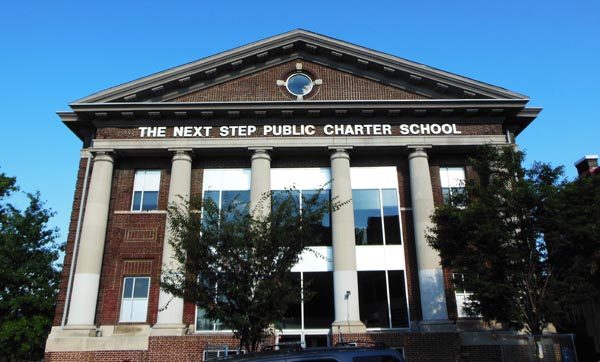
Charter schools are not uncommon in ghettos, as many see them as the only way for poor people to escape regular public schools, such as Lincoln Multicultural. They often have special programs for the “disadvantaged” or for “oppressed communities,” so funding them has become a pet project of liberal philanthropists such as Bill Gates. I escaped my terrible public high school by getting into a charter school designed for students who wanted to focus on literature and the arts, meaning it was almost entirely white.
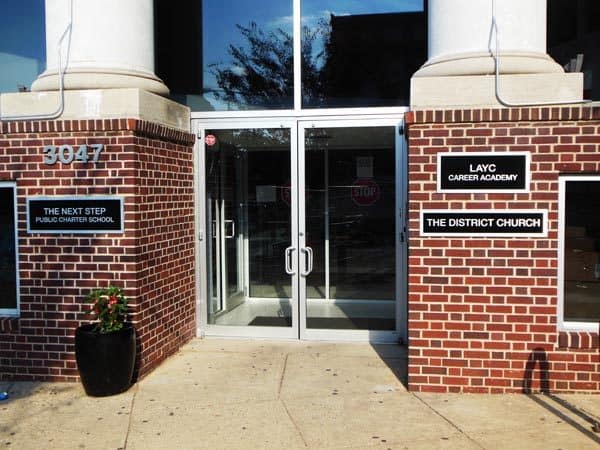
In addition to a church, this building houses not one but two charter schools, “Next Step” and “LAYC Career Academy.” LAYC stands for “Latin American Youth Center.”
Nearby signs explain the history of the building:
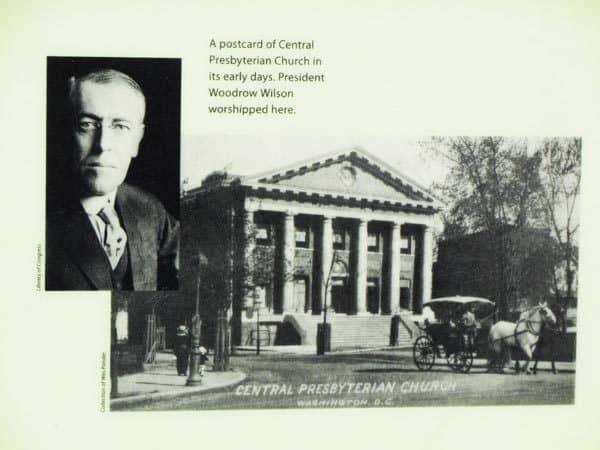

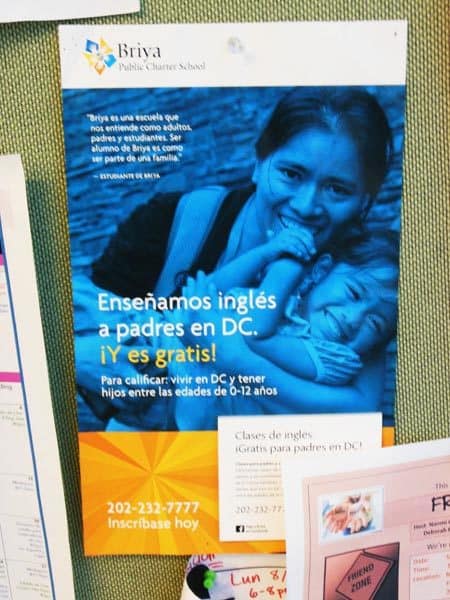
Here is a flyer I found in the local library for another Spanish-language charter school. It also advertises free English classes to Washington DC residents who have children under the age of 13. According to the school’s website, the black mayor of Washington DC recently gave this school a grant to provide immigration services to its students.
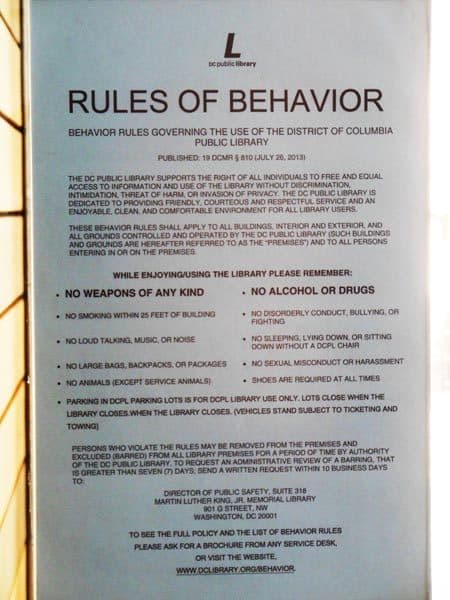
The library had this list of rules prominently posted by the front door.
In general, this area is a cultural mix of Hispanics, with plenty of Latin American eateries and storefronts lettered entirely in Spanish. Some white hipsters also live here. The small number of Asians have a few restaurants, but not much else, and although you see many black people, there are almost no “black” restaurants or stores. And as with every ghetto, there are plenty of “public service announcement”-style ads for government services and charities.
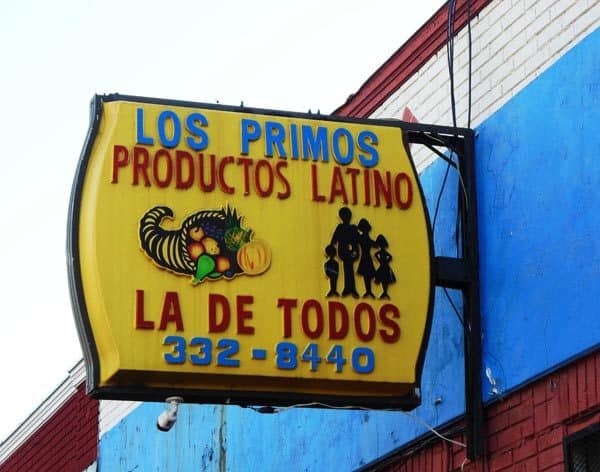
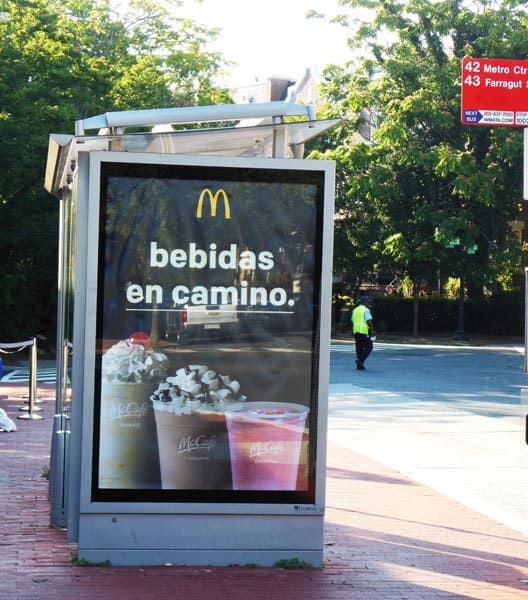
As in Silver Spring, the Spanish you see in this area is often very low quality. For example, bebidas technically means “drinks,” but it is almost only ever used to mean soda. Here it refers to shakes, fancy coffee, and smoothies.
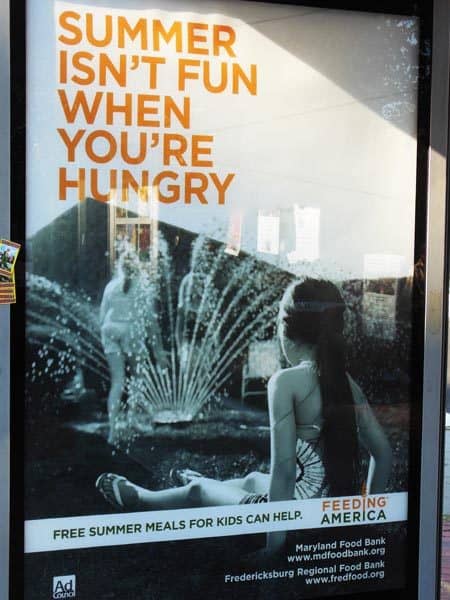
A typical inner-city public service announcement.
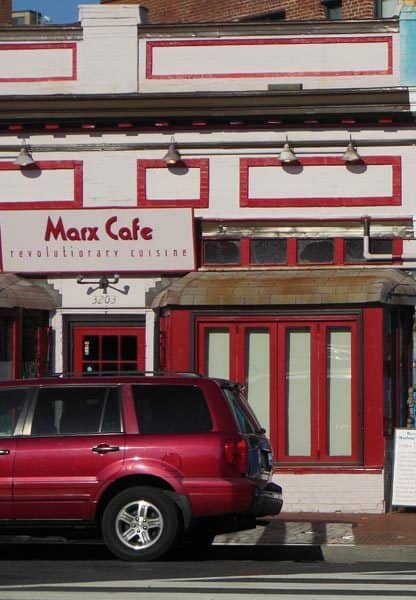
I once had dinner at the Marx Café. It is an incredibly average restaurant, just slightly overpriced, with many dishes named after Marxist figures.
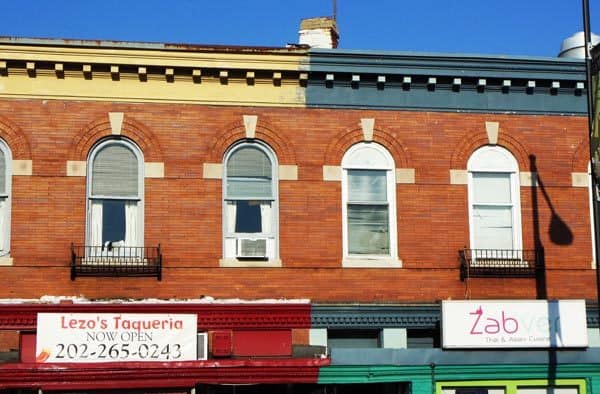
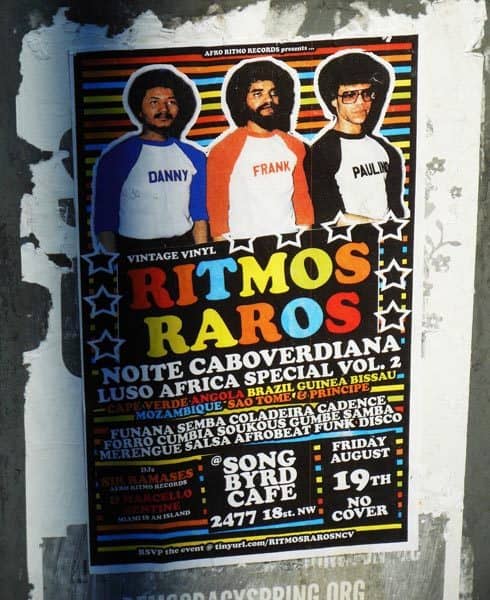
This poster is in Portuguese. How many people in the neighborhood are lusophones?
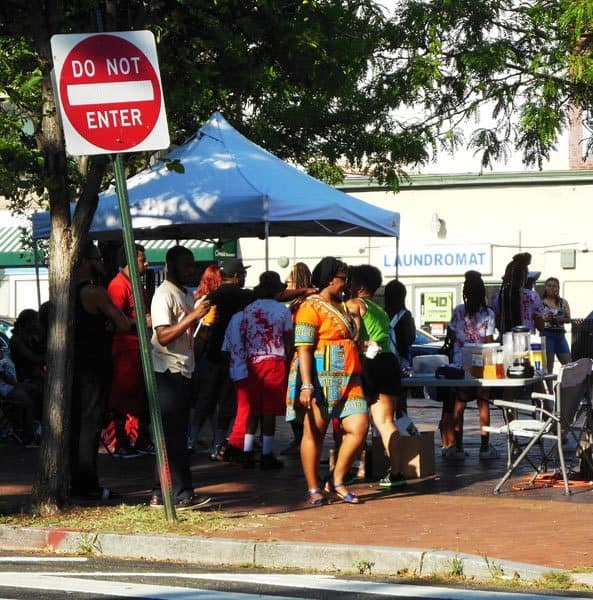
On the Saturday I was taking pictures in Mount Pleasant, there was what appeared to be a cross between a small fair and a block party, with several “spoken word” performances. Only blacks were attending, and many were unhappy I was photographing them.
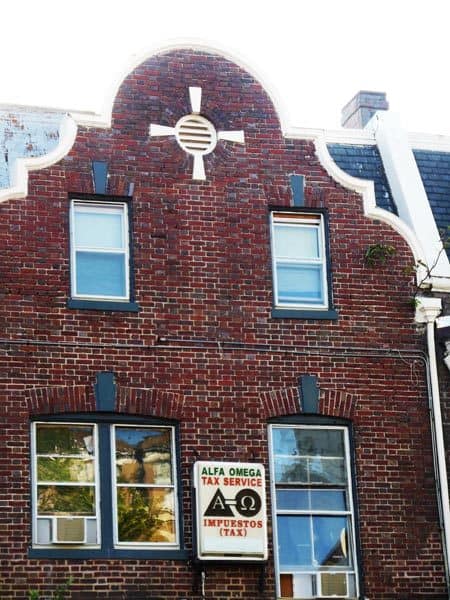
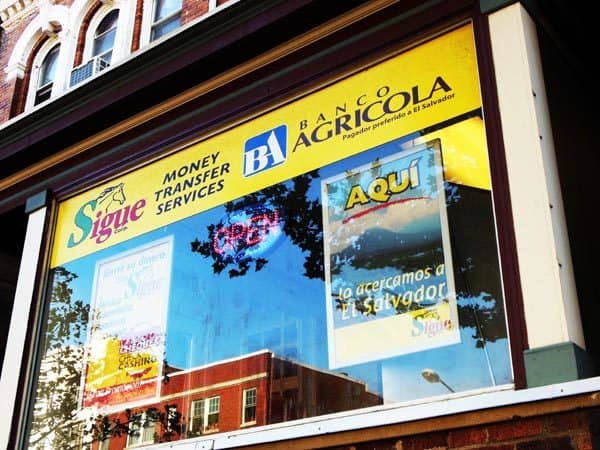
Here you can send money to family members across Central America. You can also cash checks.
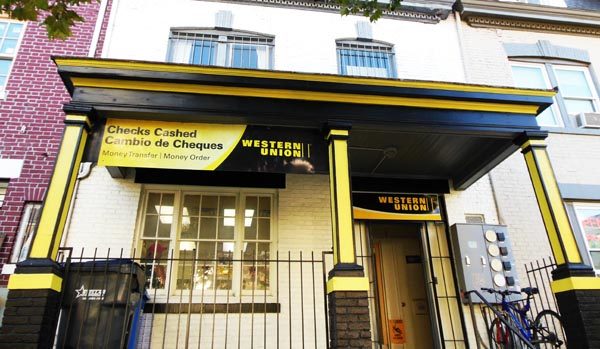
The sign outside this one-stop shop reads: “Send money, starting at $4.99 (many similar places have considerably higher minimums) / Pay your utilities / Add money to your phone / Legal services / Phones for sale.”
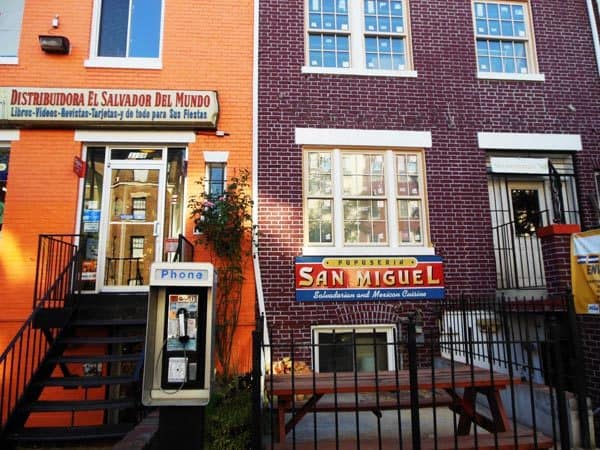
The sign on the left reads, “Salvadorian Distributor of the World/Books-Videos-Magazines-Cards-and everything for your parties.” The payphone indicates that many people here are so poor they don’t have cellphones.
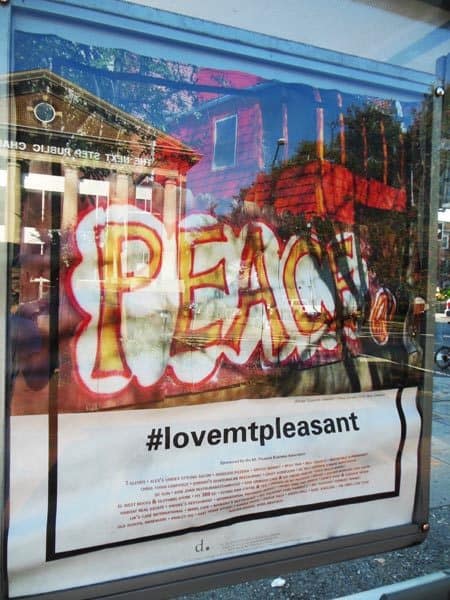
Another public-service announcement.
Naturally, one of the only obviously black-owned stores was a beauty salon. There is a “No Loitering” sign posted to the left of the window.
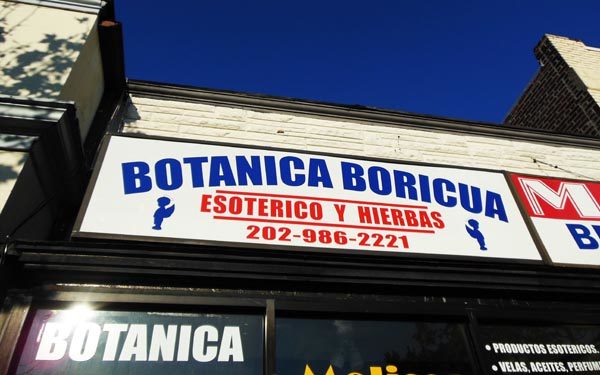
This is a good example of what I call a “Superstition Shop,” of which there is at least one in every Hispanic neighborhood. They sell a variety of trinkets that promise to cure all manner of ills. The spiritual vibe is always an unsettling mix of Catholicism and morbid pre-Columbian religions.
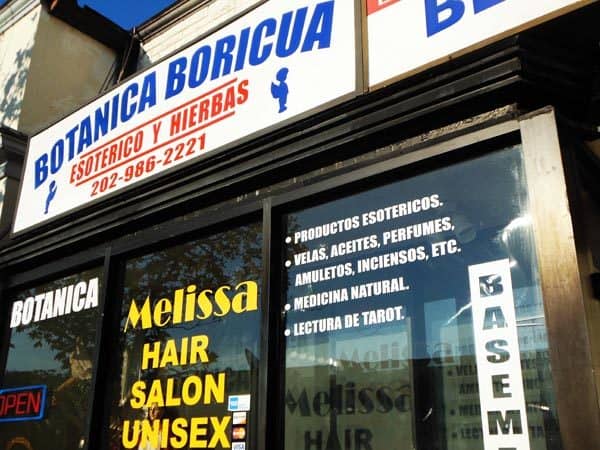
The list on the right reads: “Esoteric products / Candles, oils, perfumes, amulets, incense, etc. / Natural medicine / Tarot readings.”
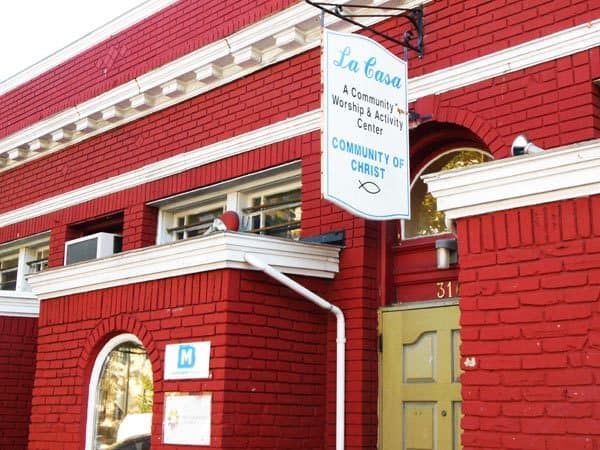
Here is yet another Christian institution — calling itself “The House” — that welcomes Hispanics.
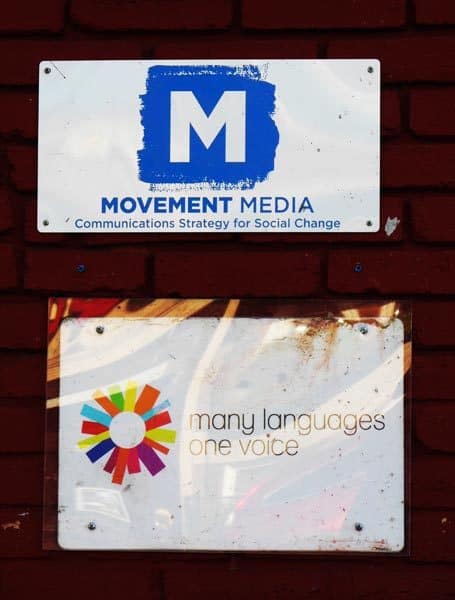
“Many languages, one voice:” typical liberal mush.
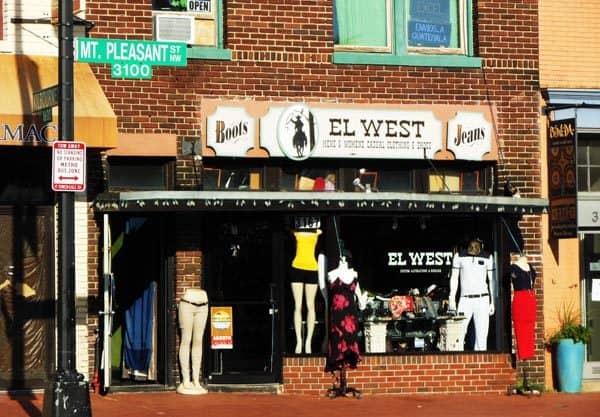
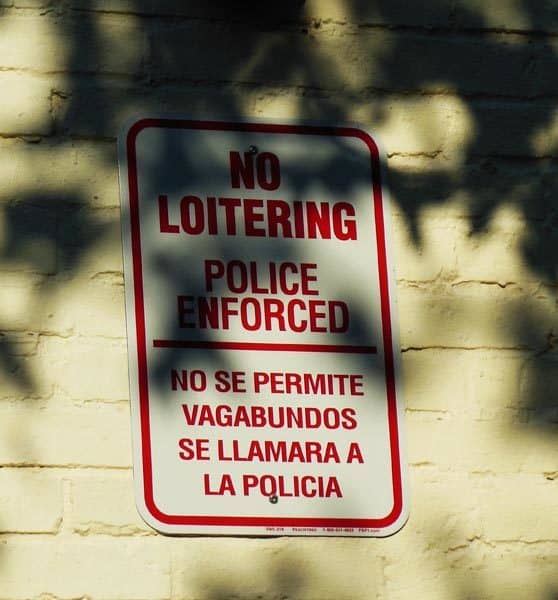
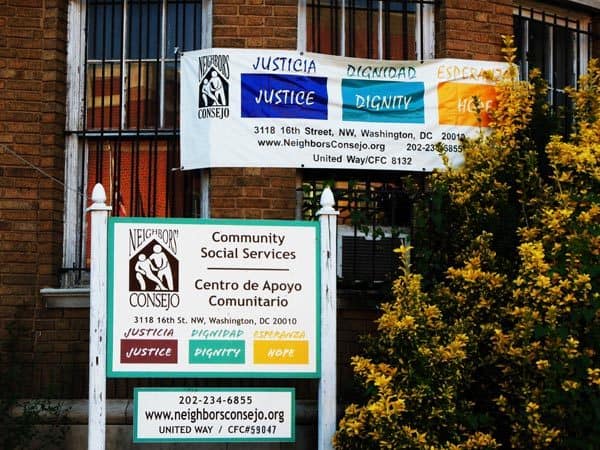
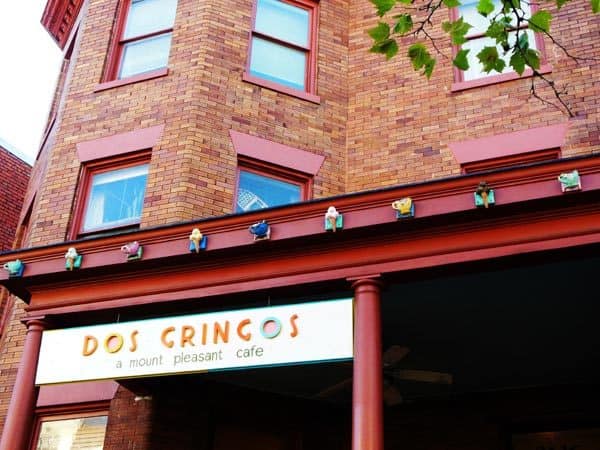
More signs of white displacement. The “Two Gringos” cafe is no doubt run by hipsters who recognize they are a vanishing breed.
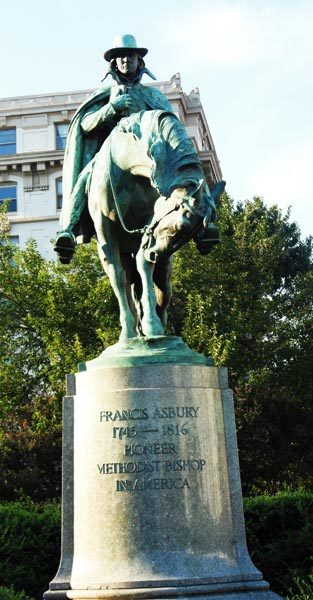
This beautiful statue is a vestige of the people who used to live here. I wonder when it will be taken down for the offense of having the word “pioneer” on it.
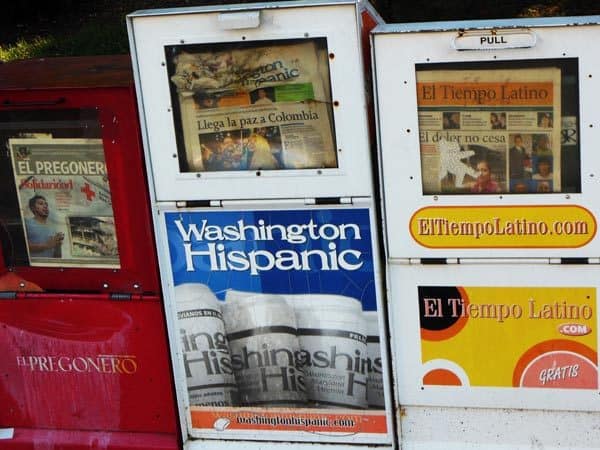
Although I found at least three different free Spanish papers, I found no black ones.
Interestingly, the park indicated by the left-arrow has only one legal name: Meridian Hill. However, in the late 1960s, when this area was largely black and had practically no Hispanics, locals began calling it “Malcolm X Park.” The moniker had such staying power that even government signs like the one above use it. The park is beautiful, and still has a number of gorgeous statues to white historical figures such as Joan of Arc and President James Buchanan.
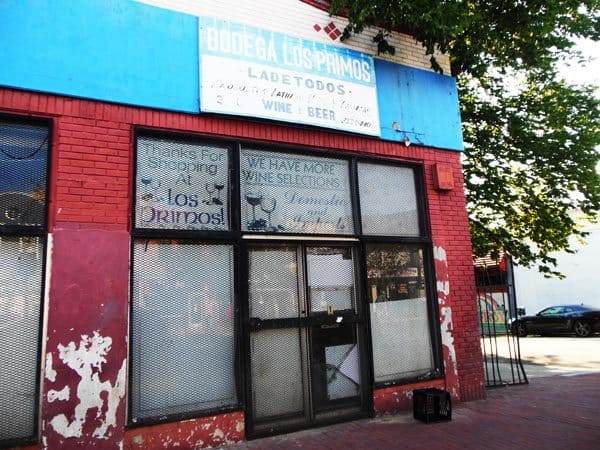
The “Cousins’ Bodega” has “everything,” including “wine & beer.”
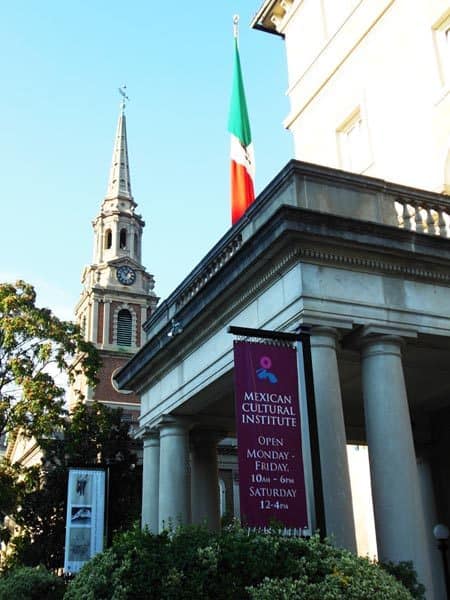
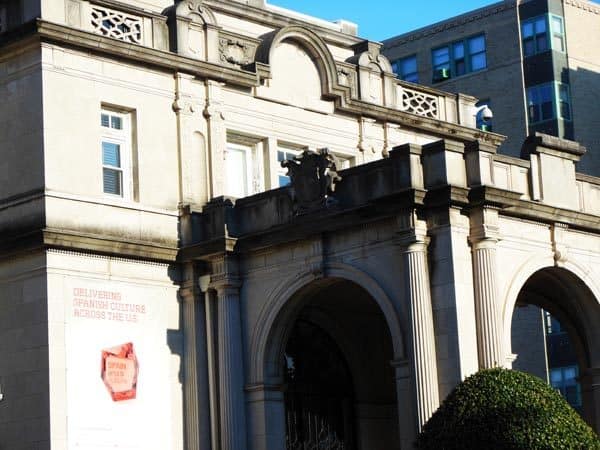
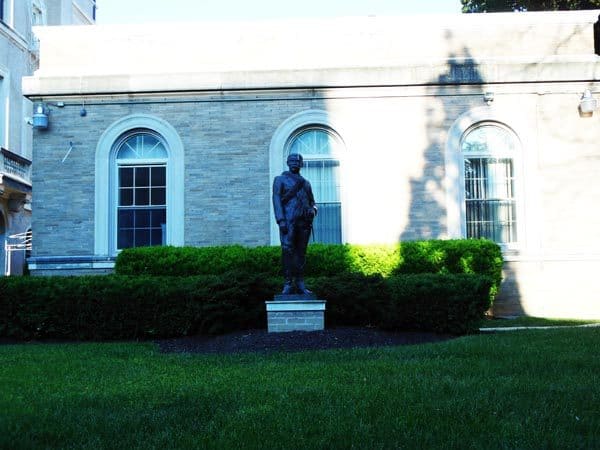
This statue stands in the lawn of the Mexican Cultural Institute. Though unmarked, because of the mustache and crossed cartridge belts, I believe it is Emiliano Zapata, the Mexican left-wing revolutionary. Incredibly, AmRen contributor Gilbert Cavanaugh found a very similar statue, also unmarked, in a Hispanic neighborhood in Minneapolis years ago.
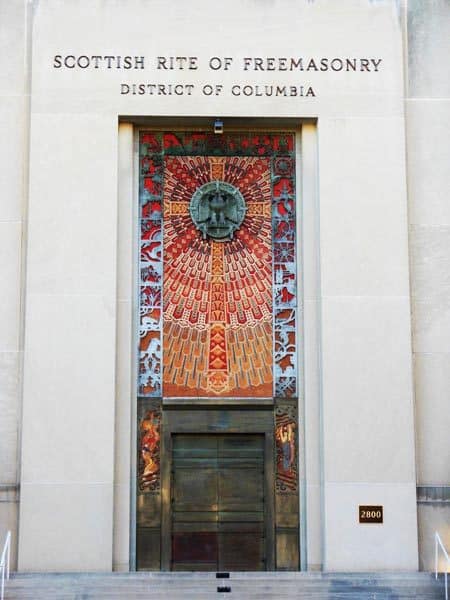
This was the most novel physical remnant of a bygone era.

Lounging black vagabonds detracted from the elegance of the building.
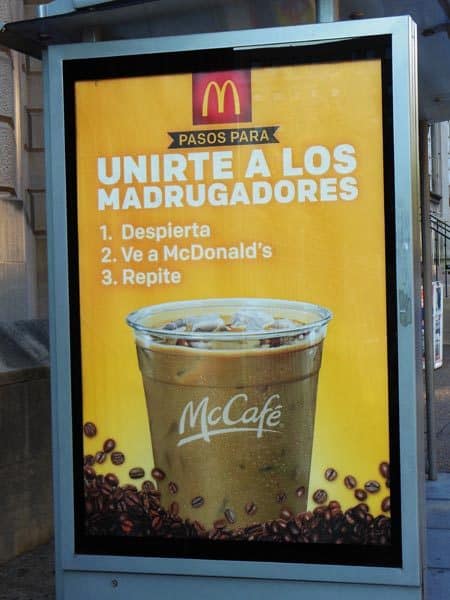
“Steps to catch up to the morning people: 1 Get up, 2 Go to McDonald’s, 3 Repeat.”
I suspect that more than anything else, what unifies all the different people in this area is that, much like America as a whole, they all eat at the same fast-food joints. Welcome to the future.

